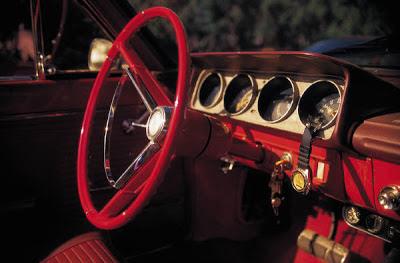Report forecast the global automotive haptic accelerator
pedal market to grow at a CAGR of 23.52% during the period 2016-2020.
Enhancing fuel efficiency will continue to be one the key
targets for all automotive OEMs, Tier-I suppliers, automobile owners, and other
stakeholders of the automotive industry. Several measures have been initiated
by stakeholders to enhance the fuel efficiency parameter. Significant R&D
investments have been made for decades in the field of powertrain technologies,
fuel technologies, and substantial efforts have been made to enhance engine
performance in order to improve fuel efficiency. The same can be achieved by
making a few improvements to the driving style and on-road behavior of the
driver.
Driving style optimization through modifications to travel
velocity, gear shifts, and acceleration rates can also lead to significant fuel
efficiency. Studies indicate that continuous advisories to drivers on optimum
driving techniques can lead to fuel-efficient improvements of up to 60%. This
necessitates a system that can continuously monitor and render constructive
driving recommendations to the driver.
The report covers the present scenario and the growth
prospects of the global automotive haptic accelerator pedal market for
2016-2020. To understand and calculate the automotive haptic accelerator
market, the market has been derived from the overall passenger cars market that
are equipped with haptic accelerator pedals. The overall passenger car market
refers to the OEM production volumes of passenger cars.
The market is divided into the following segments based
on geography:
- China
- Europe
- North America
- ROW
According to the report, a key growth driver is the need to
curb driver distraction due to multiple onboard electronics and gadgets.
Several studies indicate that though there have been significant improvements
to engines, transmissions, and powertrains, it is certainly the drivers'
driving behavior that can leverage the vehicles' maximum technological
capabilities in terms of capturing the best fuel efficiency. To address this,
the industry already has the use of communication systems that indicate to the driver
through a flashing light or a message on touch screens/dashboards the necessary
modification required to the driving style.
Further, the report states since the technology may impede a
drivers' driving style, resistance toward such systems can be significant. This
stems from the relative low awareness levels on such technologies and rapid
penetration of newer technologies in the automotive space, confronting the easy
user adaptability to all of the technological systems at one go. As per a 2016
poll by AAA, 75% of drivers in the US are afraid to be driven in an autonomous
car. Similar outcomes graced a poll conducted by the University of Michigan in
countries such as Japan, China, and India, among others. Therefore, low
awareness levels among consumers on the system reliability of some of these new
technology-enabled vehicles pose an inherent challenge for the growth of the
market.
Global Automotive Haptic Accelerator Pedal Market
2016-2020, has been prepared based on an in-depth market analysis with
inputs from industry experts. The report covers the market landscape and its
growth prospects over the coming years. The report also includes a discussion
of the key vendors operating in this market.
key players in the global automotive haptic accelerator
pedal market: Bosch, CTS, and Continental.
Other Prominent Vendors in the market are: Hella, Jaguar,
Mercedes Benz, and Nissan.
Market driver
- Need to curb driver distraction to deal with multiple audio/visual signals from on-board electronics and other gadgets
- For a full, detailed list, view our report
Market challenge
- Resistance to change and lack of user acceptance
- For a full, detailed list, view our report
Market trend
- Need for reduced size of resonator actuators used by haptic systems
- For a full, detailed list, view our report
Key questions answered in this report
- What will the market size be in 2020 and what will the growth rate be?
- What are the key market trends?
- What is driving this market?
- What are the challenges to market growth?
- Who are the key vendors in this market space?
- What are the market opportunities and threats faced by the key vendors?
- What are the strengths and weaknesses of the key vendors?
Spanning over 68 pages “Global Automotive
Haptic Accelerator Pedal Market 2016 - 2020” report covers Executive summary, Scope
of the report, Market research methodology, Introduction, Market landscape, Geographical
segmentation, Market drivers, Market challenges, Vendor landscape, Key vendor
analysis, Appendix.
For
more information Visit at: http://mrr.cm/3G7
Related Reports;
Global Automotive Optic Lenses in Safety System Market
2016-2020 - Visit at - http://mrr.cm/3G8
Global Automotive Rear Cross Traffic Alert System Market
2016-2020 - Visit at - http://mrr.cm/3GX
Global Motorcycle Infotainment System Market 2016-2020 -
Visit at - http://mrr.cm/3GB
Global Motorcycle Traction Control System Market 2016-2020 -
Visit at - http://mrr.cm/3G2

No comments:
Post a Comment